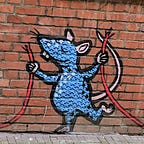The New Silent Majority
So, do you find yourself getting increasingly anxious as Election Day nears? Not me! I check Nate Silver’s FiveThirtyEight.com only three times a day. And if Trump’s popularity rises above 42 percent, I have only a mild heart attack. Oh crap, he’s up to 42.6 today! Must . . . remember . . . to . . . breathe . . .
Seriously, though, this is a critical election. It will let us know who we collectively fear more: Vladimir Putin and Kim Jong-un, or Hillary Clinton and Nancy Pelosi.
Into this ballot box apocalypse steps More in Common, a non-profit that bills itself as “a new international initiative to build societies and communities that are stronger, more united, and more resilient to the increasing threats of polarization and social division.” It just released an extensively-researched report titled Hidden Tribes: A Study of America’s Polarized Landscape.
The report is 156 pages and crammed with charts that prove someone in the organization spends too much time with Excel. The thesis, though, is fairly simple:
- Americans can be divided into seven tribes based on their core values.
- At the extremes are Progressive Activists and Devoted Conservatives, who make up eight percent and six percent of the body politic, respectively. Another 19% are Traditional Conservatives, lumped with the Devoted Conservatives because they have far more in common with each other than they do with anyone else. This third of the populace is the most politically noxious.
- The other 67% comprise “the Exhausted Majority,” whose members “share a sense of fatigue with our polarized national conversation, a willingness to be flexible in their political viewpoints, and a lack of voice in the national conversation.”
Going from the left to middle of the political spectrum, the Exhausted Majority consists of Traditional Liberals (11%), Passive Liberals (15%), the Politically Disengaged (26%), and Moderates (15%). I think I fit best in the Traditional Liberal category:
Traditional Liberals reflect the liberal ideals of the Baby Boomer generation. They maintain idealistic attitudes about the potential for social justice in America, yet they are less ideological than Progressive Activists, and they are not as intolerant of conservatives. They have strong humanitarian values, and around half say that religion is important to them. Traditional Liberals are significantly more likely to say that people “need to be willing to listen to others and compromise.” They are the most likely group, along with Progressive Activists, to handle conflict by “getting to the heart of the disagreement.” Overall, Traditional Liberals respond best to rational arguments and are inclined to place more faith in the viability of American institutions, even if they are disillusioned with the country’s current direction.
Passive Liberals are described as unhappy, insecure, distrustful, and disillusioned; they have a progressive social outlook but tend to feel alienated from their community and the system at large. The Politically Disengaged are largely young, low-income, distrustful, detached, patriotic, and conspiratorial; they’re focused on getting by and are “low-information” voters — when they vote at all. Moderates tend to be engaged, civic-minded, middle-of-the-road, pessimistic, and Protestant; they’re socially conservative but reject extremism and intolerance.
More in Common laments “America’s profound polarization,” noting that it’s part of a trend in which “authoritarian populists across the world see this as a moment ripe with opportunity to take power.” But MiC makes no recommendations for fixing the problem. And perhaps there are no solutions — except for those of us in the Exhausted Majority to vote in huge numbers on November 6 and reject the extremists on either side, especially those on the right since they have all the power now.
The Hidden Tribes report has attracted a lot of attention, at least from the websites I surf. More about it in a subsequent post.
